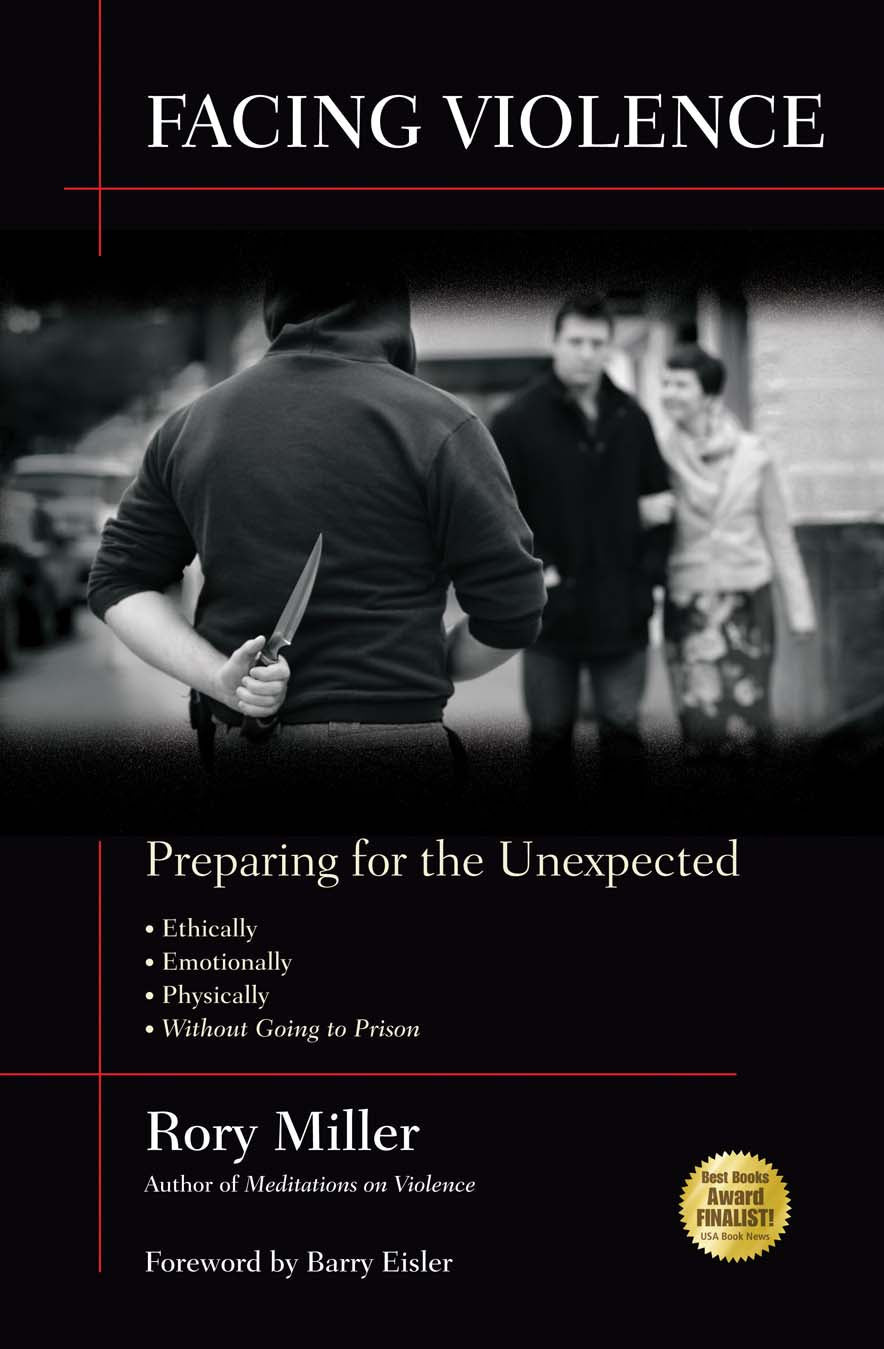Facing Violence—Preparing for the Unexpected Book by Rory Miller
Prezzo di listino
$18.87 USD
Prezzo di listino
$26.95 USD
Prezzo scontato
$18.87 USD
Spese di spedizione calcolate al check-out.
This book stands alone as an introduction to the context of self-defense. There are seven elements that must be addressed to bring self-defense training to something approaching ‘complete.’ Any training that dismisses any of these areas leaves you vulnerable.
- 1. Legal and ethical implications. A student learning self-defense must learn force law. Otherwise it is possible to train to go to prison. Side by side with the legal rules, every student must explore his or her own ethical limitations. Most do not really know where this ethical line lies within them.
- 2. Violence dynamics. Self-defense must teach how attacks happen. Students must be able to recognize an attack before it happens and know what kind they are facing.
- 3. Avoidance. Students need to learn and practice not fighting. Learning includes escape and evasion, verbal de-escalation, and also pure-not-be there avoidance.
- 4. Counter-ambush. If the student didn’t see the precursors or couldn’t successfully avoid the encounter he or she will need a handful of actions trained to reflex level for a sudden violent attack.
- 5. Breaking the freeze. Freezing is almost universal in a sudden attack. Students must learn to recognize a freeze and break out of one.
- 6. The fight itself. Most martial arts and self-defense instructors concentrate their time right here. What is taught just needs to be in line with how violence happens in the world.
- 7. The aftermath. There are potential legal, psychological, and medical effects of engaging in violence no matter how justified. Advanced preparation is critical.
Any teacher or student of self-defense, anyone interested in self-defense, and any person who desires a deeper understanding of violence needs to read this book.
We strongly recommend this book to anybody wishing to learn self-defense, or understand how to stay safe should violence rear it's ugly head
Impossibile caricare la disponibilità per il ritiro


